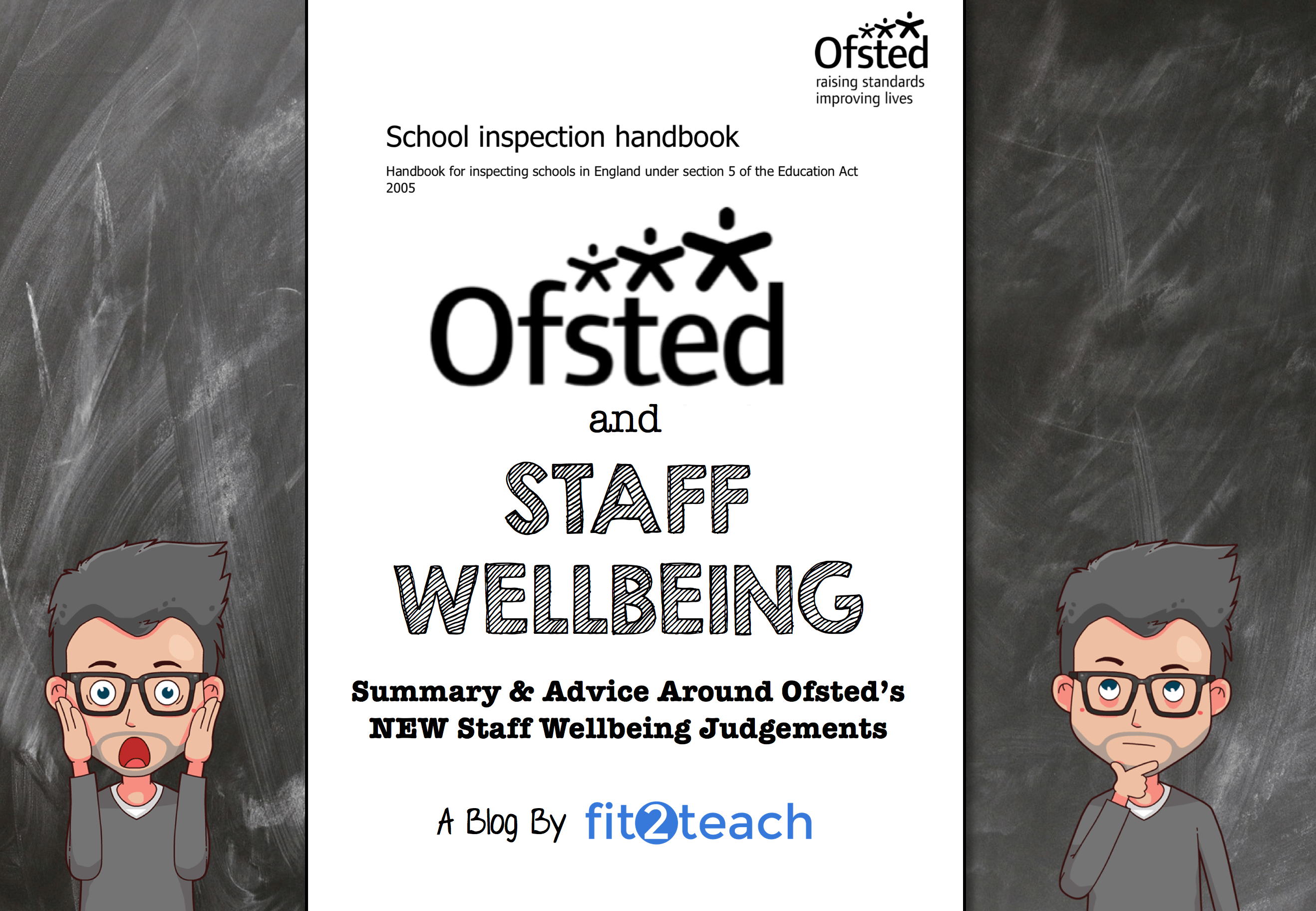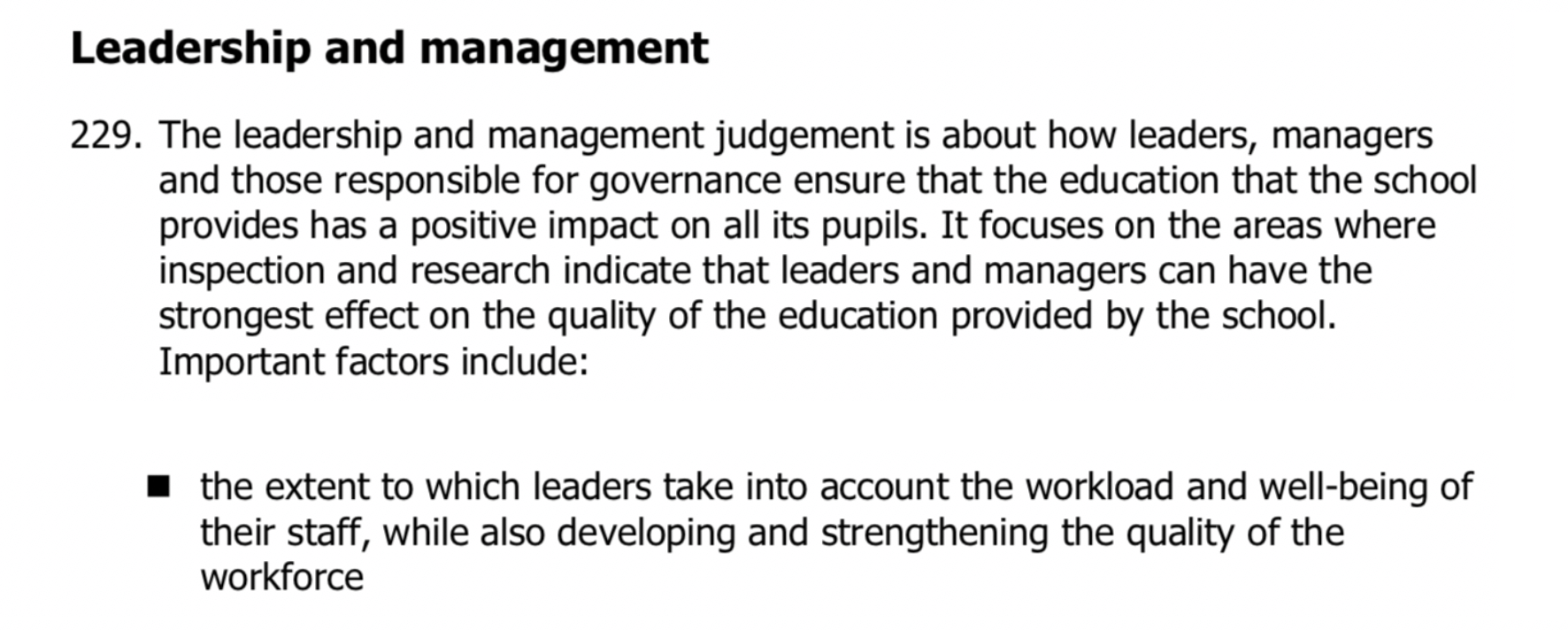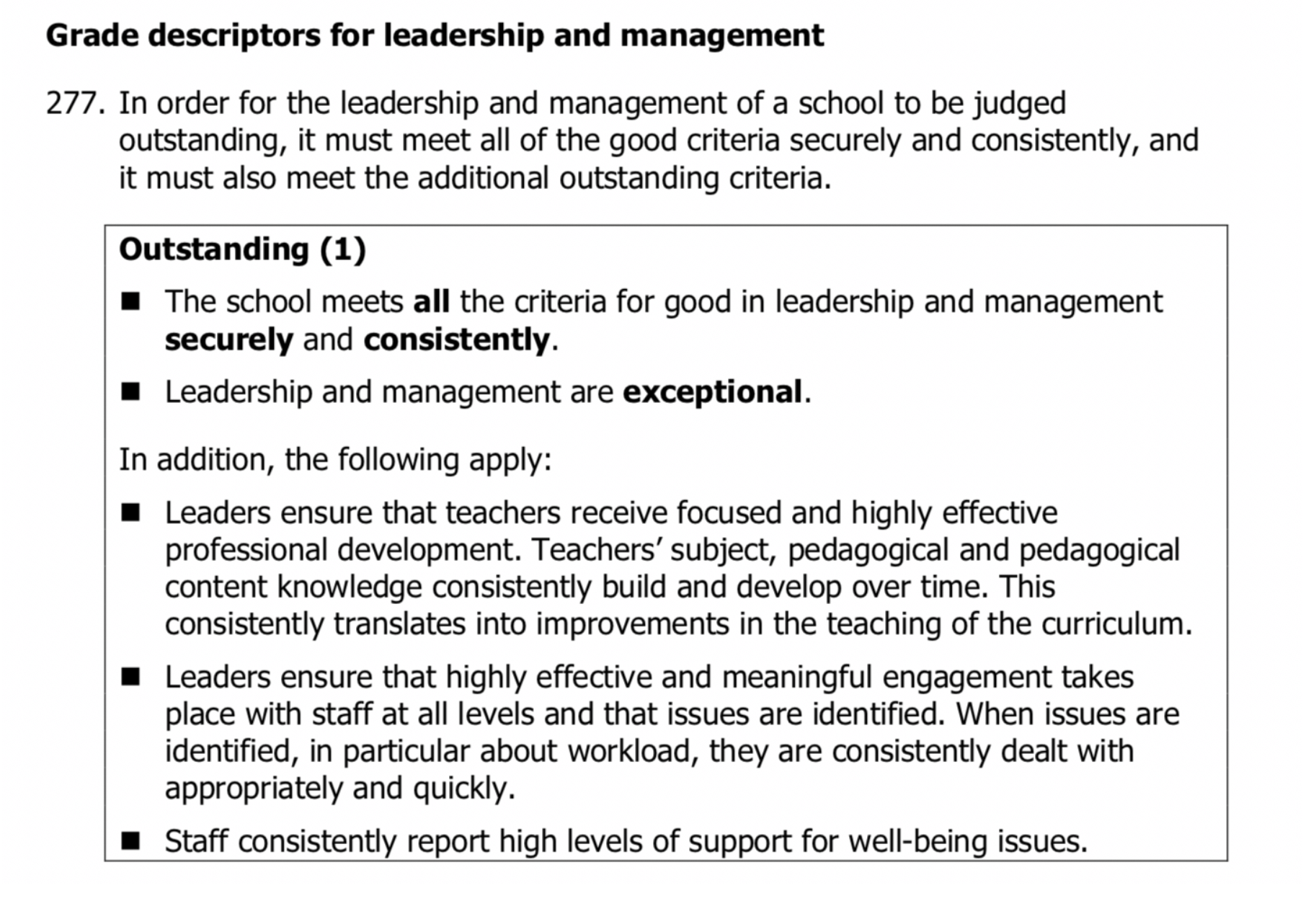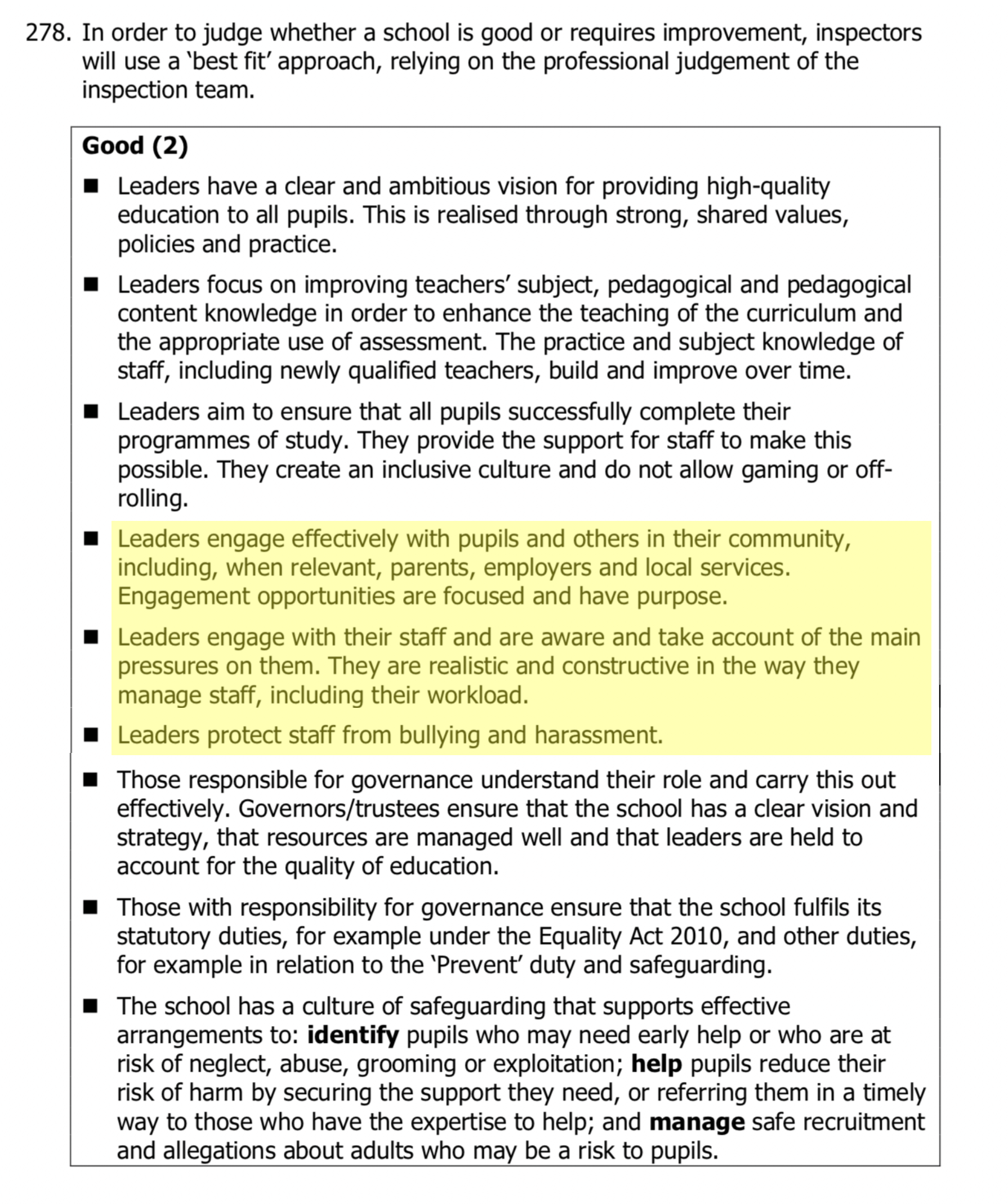
It HAD to happen. And this isn’t a case of too-little-too-late. It’s progress. Genuine progress.
If you’re lucky enough to know of ‘Ofsted’ then you genuinely need to read this and (please) share it far and wide. For those in the dark, they’re the department responsible for inspecting educational institutions across the UK. In the past, we’ve likened them to Harry Potter nemesis Lord Voldermort (or He Who Must Not Be Named). This isn’t because they’re attempting to rid the world of Muggles and/or annihilate an innocent young boy; moreso the emotional response that simply muttering their name can have on any given individual. Sadly – for Ofsted – when you’re the root of fear and loathing in schools, there’s a natural reluctance to talk about you or offer you any more attention. Ofsted-talk leads to anxiety, sadness, anger and – for many – genuine fear. Essentially, they’ve been Voldermorted. But (maybe?) they’re not – and never were – the ‘enemy’.
Here, we look at Ofsted’s ‘new’ stance on staff wellbeing and how that looks within their new Inspection Framework 2019.
Background - 2017
We’ve paid close attention to this for a while now. In fact it was August 2017 when we got our first peek of staff wellbeing accountability via the Twitter feed of UK national director for education, Sean Harford. He (quite out of the blue) posed the following question:

A few days later (Sept 2017) I wrote this in a response blog: ‘This means at any point now - or in the immediate future - a school leader will be asked by their inspection team exactly how they intend to reduce teacher workload.’ But it took until this year for us to see its implementation in any form at all. Eighteen months later – and with no signs of change – I asked Sean what the crack was.

My timing was good: a new Inspection Framework had just been published in its draft form ahead of consultation. Sean was awesome; incredibly helpful and he kindly answered my queries and pointed me in its direction. More recently, he deleted all his replies thus (sadly!) removing any evidence I had of a Twitter conversation with anyone remotely famous – unless you count a brief 2015 exchange with Masterchef legend, Gregg Wallace.
Finally though, the breakthrough had been made. The conception of a school’s accountability for its role in safeguarding the wellbeing of its staff had taken place. Nine months later, the staff wellbeing agenda is well and truly born.
September 2019 – Present Day
Out of its draft form and into the hands of school leaders, staff, governors, parents and inspectors, we now have new school inspection guidlines. Placing greater emphasis on a school’s curriculum as well as pupil safeguarding, it (finally) includes staff wellbeing statements on which judgements will be made: 2019 Oftsed School Inspection Handbook. It’s a lengthy document, so – in the name of helping reduce your workload - let’s breakdown exactly where and how staff wellbeing features.
Staff Wellbeing and The New Ofsted Framework, 2019
With a school’s staff wellbeing and workload agenda being driven by its leaders, your school’s efforts will fall within judgments made under the framework’s ‘Leadership and Management’ strand. Below is the summary of this strand and how staff wellbeing contributes to it:

The wording here is crucial. That word ‘extent’ remains subjective; but we’re hopeful that Ofsted see through the Yoga and Staff-Shout-Out Boards (even a free day off!) and place greater emphasis on a school evidencing genuine attempts to reduce workload; to change school culture and thinking around different ways of working; and to improve work-life balance. We’re not totally battering those more generic inclusions to your wellbeing policy; but short-term wins won’t drive change to enable Ms Baily to spend more time with her own kids over Maths books this weekend. You’ve got to be in it for the long haul. Time and progression is crucial.
So it features - only just! But staff wellbeing and the workload agenda finally makes its way into an Ofsted inspection, thus significantly increasing the chance of it becoming a (or more of) a priority in your school. Interestingly though, the plot thickens with further references to be found within the criteria used to grade Ofsted-inspected schools.
Staff Wellbeing Judgements and Grading
The management of staff and their wellbeing features massively in Ofsted’s grading of a school’s leadership and management.

Above, a deliberate attempt is made to focus a school towards its staff. Bullet-pointing the three wellbeing judgements creates a staff wellbeing agenda of its own accord – not to be bolted on to existing policies or initiatives. Clearly, a school will be judged on its approach to staff professional development and meaningful engagement (feeling valued and appreciated); on tackling workload issues (work-life balance); and the consistency of its approach (overall job satisfaction). Naturally, this is ambitious being an outstanding grading; but good schools are still required to engage (as highlighted below) and there’s specific reference to staff harassment and bullying.

Has the shift in school culture begun? Time will tell; but what IS encouraging is that by seeing all this in print – particularly in the grading of a ‘good’ school - we finally have at least a default position built around staff wellbeing. Accountability changes everything; with schools now having to meet and being challenged to exceed these expected standards.
What Does All This Mean For STAFF?
I guess that depends on your role!? For practitioners it’s a potential game-changer. Those workload worries; your declining mental health; that non-existent work-life balance suddenly contribute to your school’s Ofsted grading. There isn’t a better time for your voice to be heard; and the profession as a whole should benefit from these changes. School leaders and those in leadership roles will possibly have more questions than answers? Could it have a negative effect on their own wellbeing? Possibly. But – if approached in the right way – this could be something incredible and worthy of backing wholeheartedly and getting excited about. Who doesn’t want a happier and healthier staff.
What Should Schools Do?
I’d want to (at the very least) feel prepared. It’s way too lazy to suggest that there aren’t staff wellbeing or workload issues at your gaff! There will be; but they’ve most likely (and through no fault of your own) become normalised. Communication HAS to be a starting point; and I’ve written a previous blog-post covering things you can quickly put in place.
Looking again at the judgements, consistency is crucial. Play the long-game over superficial quick-wins and you’re sure to be rewarded. For me, only a real-time, consistent, ongoing approach to staff wellbeing can change the culture of the profession. Like anything we do well, it requires the monitoring and measuring of wellbeing and workload; with issues being identified, addressed and ironed-out. We should be seeing and recording our gains and achievements; and celebrating them together.
That – pretty much – covers what we know thus far. Hopefully, you’ll have taken something from this. We’ve seen and worked with staff wellbeing at its worst and absolute best. This isn’t a sales-pitch (not my style!); but should you be interested to see how fit2teachSchools can deliver the real-time, monitoring and evidencing of your wellbeing wins and gains that you’re looking for, check out how Headteacher – Jackie - and her team tackled their staff wellbeing agenda and how they can prove its success at the press of a mouse-button.
Matt
CEO fit2teach